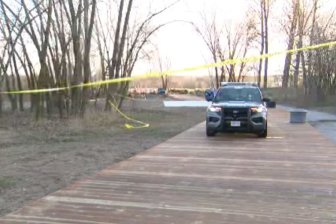Confirmed cases of the novel coronavirus in Canada topped 50,000 on Tuesday.

Federal and provincial authorities said 2,859 had died from the virus by 6 p.m. ET, adding that 19,198 had recovered.
Quebec, the country’s hardest-hit province, has reported 27,757 confirmed cases and 1,682 deaths, accounting for more than half of all COVID-19-related deaths in Canada.
The United States — the epicentre of the virus — has over 1 million confirmed cases. Over 55,000 people in the U.S. have died from COVID-19 — a number higher than that of Canada’s total confirmed cases.
In total, more than 216,800 across the globe have died from the novel coronavirus.
But despite rising numbers of confirmed cases, health officials have said that Canada’s curve is flattening.
“We are making clear progress to slow the spread and bring the epidemic under control,” chief public health officer Theresa Tam told reporters.
Several provinces, like Ontario and British Columbia, have even begun deliberating what a new normal would look like.
Last week, Saskatchewan, Prince Edward Island and New Brunswick announced tentative timelines that would ease restrictions and slowly reopen the economy.
Ontario Premier Doug Ford unveiled his framework for reopening on Monday, which included a three-stage plan that would ease restrictions, although no set dates were given.
Prime Minister Justin Trudeau urged caution after Quebec announced its plan to reopen parts of its economy as early as May 4, saying that Canada is “not there yet” when it comes to that ability to lift COVID-19 restrictions.
“It is natural that after a long time in isolation, we would want to see things move back towards normal,” he said.
“There are plans and there are hopes that we’re going to see certain parts of the country take steps, including Quebec around elementary schools — but we’re not there yet.”
Prime Minister Justin Trudeau clarified reopening the economy would be made in accordance with each province and territory’s individual COVID-19 situation, adding that returning to some semblance of normal would be a slow process.

Federal and provincial governments will be required to establish checklists and guidelines that follow health practices in order to prevent a resurgence of COVID-19 once they reopen.
“Let me be clear,” he said. “These are not the specific measures when you can go back to work or school or when you can see your neighbours or extended family or friends.”
“This framework will lay out the things that need to happen before we take any next steps. Restarting our economy will be gradual and careful and will be guided by science.”
Tuesday’s milestone in cases also comes amid reports of new cases across other provinces in Canada.
Alberta and British Columbia announced a total increase of 154 and 55 cases, respectively, while Saskatchewan and P.E.I. both reported an additional one case each.
Nova Scotia reported 15 additional COVID-19 cases on Tuesday, bringing its total to 915.





Comments